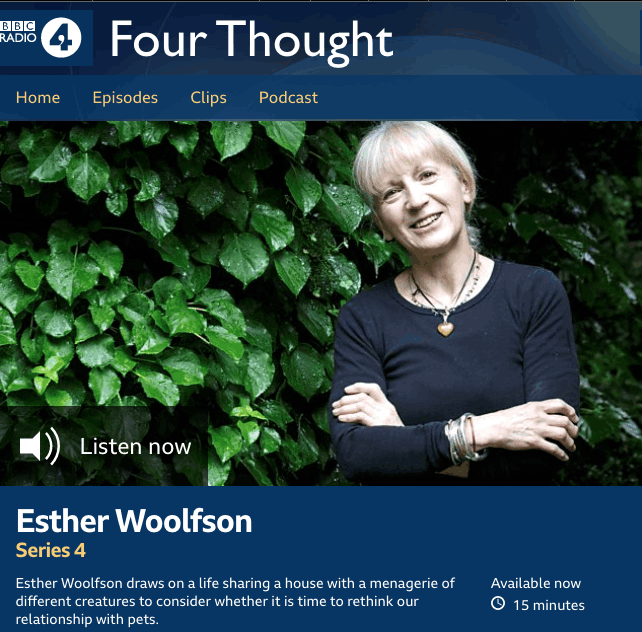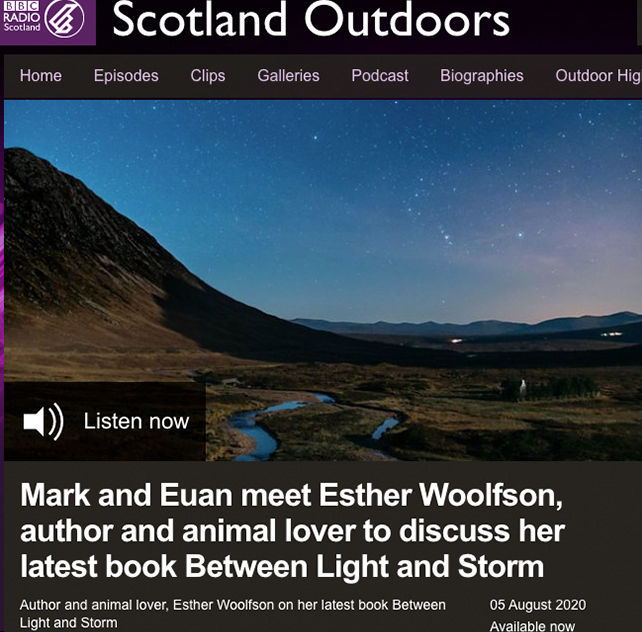Four Thought, Series 4 - BBC Radio 4
Is it time to radically re-think pet ownership? In this highly challenging and thought provoking Four Thought the writer Esther Woolfson argues that a lifetime spent sharing her home with a variety of birds and animals - rook, magpie, crow, starling, canaries, parrots, rats and rabbits - has led her to understand just how little we really know about the capacities and feelings of other beings. Pushing us to consider why we own pets in the first place Esther's talk promises to have you looking at Rover, Ginger, Fluffy or Socks in a whole new light.
Cornerstones - BBC Radio 3
The writer Esther Woolfson contrasts the solidity of Aberdeen, the 'Granite City', with the decline of the North Sea oil and gas industry, on which its economy has so relied since the 1970s. It's part of this week's series of Cornerstones - nature writing about rock, place and landscape.
Author of 'Field Notes from a Hidden City', about her encounters with Aberdeen's wildlife, Esther reflects on the city's relationship with the North Sea hydrocarbons industry, and how much the city has been affected by the waning oil boom. She contrasts the city's big, public granite Victorian edifices with the slow creation in past milennia beneath the seabed of the oil and gas hydrocarbons which have powered the modern world.
Producer: Mark Smalley
Image: Courtesy of the artist Rose Ferraby.
Natural Histories: The Big Story
Lions, Sharks, Whales and Apes are four well known A-lister groups of animals that have got under our skin, enthralled us with their wildness and inspired literature, film, myth and legend. But so have Cockroaches and Fleas and the much lesser known Burbot and Mandrakes. Natural Histories has brought 25 groups of animals and plants together across 25 episodes to tell the stories of nature's influences on human culture from across the globe.
The Big Story, a special live event presented by satirical comedian Rory Bremner and Natural Histories presenter Brett Westwood tells a story of the earth from Dinosaurs to people. With comedy, music, readings and discussion all held in the spectacular Hinze Hall of the Natural History Museum. We tell a uniquely Big Story of 100 million years' worth of natural history.





